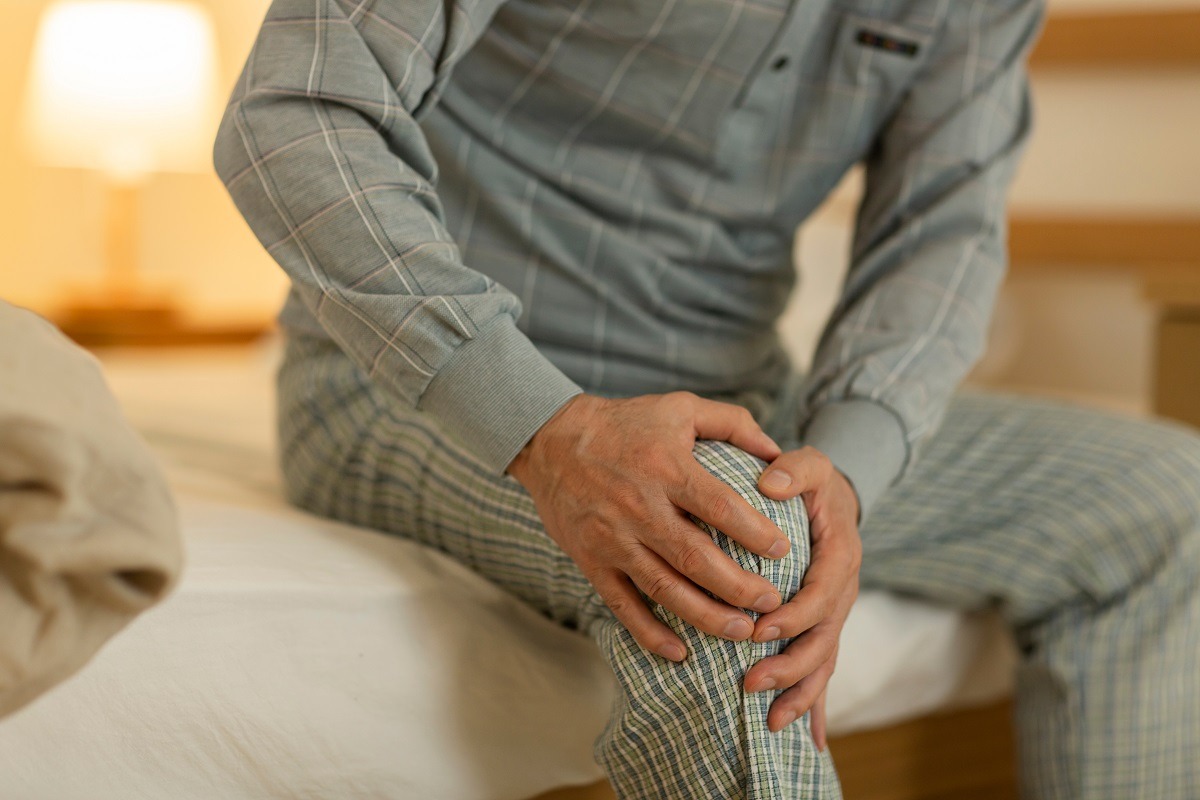
Arthralgia, how to cope with joint pain
The term arthralgia refers to any type of joint pain and, therefore, pain that affects a joint and the tissue surrounding it
It is a symptom, rather than a disease, and it is a very common condition: more than 50% of the adult population suffers from it, at least once in their lifetime.
And the percentage becomes higher after the age of 60.
If arthralgia is the primary symptom of arthrosis in the elderly population, it is usually caused in younger people by rheumatoid arthritis, spondyloarthritis or infectious arthritis or connective tissue disease.
The pain does not always come from the joint itself: it can also be caused by changes in ligaments, muscles, tendons.
It is therefore essential to consult a doctor, so that he can identify the pathology underlying the arthralgia symptom and develop the best therapy.
Arthralgia: what is it?
Arthralgia, joint pain, is a common symptom.
It can be caused by injuries but also by degenerative diseases such as arthrosis or metabolic diseases such as hypothyroidism, along with many other conditions.
The joints, structures that connect two or more bones, are affected.
These can be fibrous, cartilaginous or synovial.
Fibrous joints (or synarthroses) are not mobile: the typical example is the skull, whose bones are ‘welded’ together by fibrous tissue; cartilaginous joints (or anphyarthroses), such as those that connect the vertebrae to the spine, have greater mobility than fibrous joints and are characterised by a cartilaginous bond between the bones; synovial joints (or diarthroses), such as those of the shoulder and knee, have high mobility and are subdivided into further subtypes depending on the movement they allow.
When a joint aches, we speak of arthralgia
A pathology (or rather symptomatology) often confused with arthritis.
While arthritis is defined as an inflammatory disease affecting the joints, arthralgia is a generic term for joint pain that can be caused by an injury, a physical condition, or an inflammatory or non-inflammatory disease.
All joints can be affected by arthralgia: wrists, hands, elbows, spine, hips, knees, ankles, feet.
Arthralgia: the causes
There are several causes behind joint pain, and they can be either physiological or pathological.
Among the physiological causes are:
- age: ageing causes degeneration of the joints that, when healthy, protect the bones (when the joint degenerates, the bones come to rub against each other, causing inflammation);
- pregnancy and menopause: the weight gain and skeletal changes that occur in the last months of pregnancy can cause joint pain while, during menopause, it is the imbalance between oestrogen and progesterone that stiffens the soft tissues surrounding the joints;
- stress: when one is stressed, the muscles become stiff due to the production of noradrenaline, which prevents the muscles from properly supporting the joint;
- excessive weight: obesity is the main cause of arthrosis;
- sedentariness: those who do not exercise weaken their muscles, which are thus unable to protect the joints;
- premenstrual syndrome: according to the most recent studies, hormonal imbalances preceding the menstrual cycle cause joint pain;
- sports injuries: a serious joint injury can cause painful symptoms even after a long time, when the person is older;
- joint sprains and dislocations, which can cause long-term inflammatory states.
Pathological causes include:
- arthritis (osteoarthritis, rheumatoid arthritis, gout, systemic lupus erythematosus, reactive arthritis, psoriatic arthritis, ankylosing spondylitis);
- hypothyroidism;
- influenza: flu-like illnesses cause joint and muscle pain due to inflammation caused by the imbalance in the body between water and mineral salts;
- viral infections;
- coeliac disease: in addition to gastrointestinal problems, symptoms of gluten intolerance include joint pain;
- psoriasis: in addition to the skin manifestation, psoriasis can also give rise to a particular form of arthritis;
- tendinitis;
- other rheumatic diseases;
- malignant bone tumours.
Arthralgia, the symptoms
Arthralgia is itself a symptom, but can sometimes be accompanied by other symptoms:
- reddening of the skin
- swelling, usually caused by fluid inside the joint
- joint stiffness
When arthralgia is very serious, the joint pain becomes intolerable and can prevent the patient from carrying out normal activities.
Read Also
Emergency Live Even More…Live: Download The New Free App Of Your Newspaper For IOS And Android
Arthrosis: What It Is And How To Treat It
Septic Arthritis: Symptoms, Causes And Treatment
Psoriatic Arthritis: How To Recognize It?
Arthrosis: What It Is And How To Treat It
Juvenile Idiopathic Arthritis: Study Of Oral Therapy With Tofacitinib By Gaslini Of Genoa
Rheumatic Diseases: Arthritis And Arthrosis, What Are The Differences?
Rheumatoid Arthritis: Symptoms, Diagnosis And Treatment
Joint Pain: Rheumatoid Arthritis Or Arthrosis?
Cervical Arthrosis: Symptoms, Causes And Treatment
Cervicalgia: Why Do We Have Neck Pain?
Psoriatic Arthritis: Symptoms, Causes And Treatment
The Causes Of Acute Low Back Pain
Cervical Stenosis: Symptoms, Causes, Diagnosis And Treatment
Cervical Collar In Trauma Patients In Emergency Medicine: When To Use It, Why It Is Important
Headaches And Dizziness: It Could Be Vestibular Migraine
Migraine And Tension-Type Headache: How To Distinguish Between Them?
First Aid: Distinguishing The Causes Of Dizziness, Knowing The Associated Pathologies
Paroxysmal Positional Vertigo (BPPV), What Is It?
Cervical Dizziness: How To Calm It Down With 7 Exercises
What Is Cervicalgia? The Importance Of Correct Posture At Work Or While Sleeping
Lumbago: What It Is And How To Treat It
Back Pain: The Importance Of Postural Rehabilitation
Cervicalgia, What It Is Caused By And How To Deal With Neck Pain
Rheumatoid Arthritis: Symptoms, Causes And Treatment
Arthrosis Of The Hands: Symptoms, Causes And Treatment


